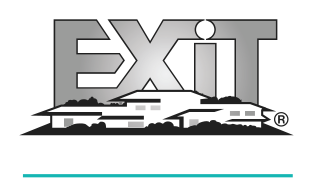Property ownership has always been considered a wise investment. For many, it’s a cornerstone of wealth accumulation and retirement planning. However, like any investment, there are risks involved, and the real estate market can be unpredictable. This is where reverse mortgages come into play as an excellent hedge against property value risk, especially in today’s dynamic real estate landscape.
What Is a Reverse Mortgage?
Before delving into the role of reverse mortgages as a hedge against property value risk, it’s essential to understand what a reverse mortgage is. A reverse mortgage is a financial tool available to homeowners, typically aged 62 or older, which allows them to convert a portion of their home equity into cash while still living in their home. Unlike traditional mortgages, where homeowners make monthly payments, reverse mortgages provide homeowners with regular payments, a lump sum, or a line of credit based on the equity in their homes. This innovative financial product can be a valuable resource for retirees looking to supplement their income or address unexpected expenses.
Reverse Mortgages: A Hedge Against Property Value Risk
Property value risk is a concern for homeowners, especially during times of economic uncertainty and real estate market fluctuations. The value of your property may rise, providing a significant return on investment, or it may decline, potentially impacting your financial stability. Reverse mortgages can play a crucial role in mitigating this risk. Here’s how:
1. Access to Cash Regardless of Market Conditions: With a reverse mortgage, homeowners can tap into their home equity without selling their property. This means that even if property values decrease, you can continue to receive income from your home, providing a stable financial cushion.
2. No Repayment Until You Leave Your Home: Reverse mortgages do not require repayment until the homeowner permanently leaves the home. This means that as long as you’re living in your property, you can enjoy the benefits of the reverse mortgage, regardless of property value fluctuations.
3. Guaranteed Lender Obligations: Lenders who offer reverse mortgages are regulated, and the homeowner’s obligation is limited to the home’s value. This ensures that even if the property value declines below the loan balance, the homeowner or their estate is not responsible for the difference.
4. Potential for Property Appreciation: While property values may fluctuate over the years, the potential for property appreciation remains. In the long term, your home may still increase in value, allowing you to benefit from both the equity growth and the reverse mortgage.
5. Non-Recourse Loans: Reverse mortgages are typically non-recourse loans, meaning the lender cannot seize other assets or sources of income to repay the loan. The home itself is the only collateral.
Conclusion
In today’s unpredictable real estate market, homeowners need financial tools that can provide stability and security. Reverse mortgages offer a unique solution to hedge against property value risk, allowing homeowners to access their home equity while still living in their property. The benefits include financial security, the ability to address unforeseen expenses, and the peace of mind that comes with knowing you have a financial cushion. Reverse mortgages are an excellent option for those looking to leverage their home equity, making them a valuable tool for retirement planning and financial peace of mind, especially in these uncertain times.


